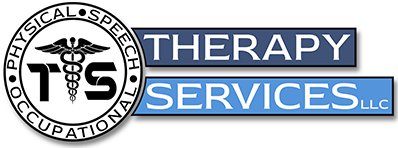MENS PELVIC HEALTH
In recent years, more and more people are seeking education, help and guidance when it comes to problems arising in bowel, bladder and sexual function. Men are no exception.
What is Pelvic Rehabilitation?
A non-surgical approach that addresses dysfunctions in relation to the pelvic girdle that contribute to bowel, bladder, sexual health and pain complaints.
Strategies to help address these issues may include manual therapies, modalities, behavioral strategies, therapeutic exercise, functional re-training, education, and much more!

Pelvic Health Services
In recent years, more and more people are seeking education, help and guidance when it comes to problems arising in bowel, bladder and sexual function. Men are no exception. However, male pelvic health is still behind in terms of research, training, and trained clinicians in the field. One of the many assumptions is that when discussing pelvic health, it is only concerning the female anatomy, and this couldn’t be further from the truth. Men have pelvic floor muscles too, and problems can arise in this area that play a crucial role in one’s overall health and well-being.
Pelvic floor muscles are a group of muscles located at the base of the pelvic bowl. These muscles can contribute to problems in the bladder, bowl, prostate, and sexual function. These muscles play a crucial role in the five S’es”
- Sphincteric Control: These muscles work with your sphincters to close down bowl and bladder to help keep one continent, or opposite, help relax to evacuate/expel.
- Support: Due to the location of these muscles, they support everything above, including organs, tissue, and work with your abdomen and diaphragm to help regulate your body’s intra-abdominal pressure system.
- Stability: These muscles work together with the rest of the musculoskeletal system to optimize movement and function. They provide postural support and adapt to changes both internally and externally.
- Sexual Appreciation: These muscles, in conjunction with the brain, spinal cord, peripheral nerves, ligaments and blood vessels, play a role in erection, ability to keep an erection, and ejaculate.
- Sump Pump: You have to have good blood flow in this region in order to ejaculate. The pelvic floor can act as the pump, squeezing and releasing to help fluid move.
Pelvic floor physical therapists are specialty trained clinicians that work with the pelvic floor muscles to influence many of these areas. Understanding common pelvic floor issues that can occur in men and their causes, can help raise awareness and encourage open conversations about men’s pelvic health. At Therapy Services, our specialty trained pelvic floor physical therapist will work with you, taking a detailed history, perform movement testing, establish a plan of care, and discuss your treatment options. Above all, we understand this is a sensitive area and topic, and our therapist will work with you to make sure you feel comfortable and informed about your condition and treatment.
Common Conditions Treated (but not limited to):
- Testicular pain
- Groin pain
- Penile pain
- Chronic Pelvic Pain Syndrome/ Chronic Prostatitis
- Urinary Incontinence
- Pain with sex
- Post-prostatectomy Incontinence
- Erectile Dysfunction
- Constipation
- Fecal Incontinence
- Pudendal Neuralgia
- Pelvic Floor Dysfunction
- Bladder Pain
- Tailbone Pain
- Abdominal Pain
Possible Treatment Options:
- Pelvic floor muscle neuromuscular re-education, coordination, strength, and endurance training
- Manual therapy (internal/external myofascial release techniques, trigger point release, scar mobilization)
- Lumbopelvic stabilization exercises, core strengthening and flexibility training
- Patient education
- Relaxation techniques
- Biofeedback (internal and/or external)
- Modalities (electrical stimulation, heat/ice, ultrasound, combo)
- Home exercise program
What to Expect at Initial Evaluation
- A comprehensive musculoskeletal evaluation with review of past medical history, medications, diagnosis and other areas of concern.
- Education and review of the plan of care for maximum rehabilitation.
- An internal evaluation may be an integral part of your treatment plan, but it is not necessary at evaluation! You and your therapist will decide together on the best plan of action in order to achieve optimal success.




Got Questions or Want to Schedule?
Call: ( 304 ) – 599 – 2600

Rebecca Rohanna
PT, DPT, BCB-PMD, PCES Physical Therapy Director
Frequently Asked Questions
How long do we need to come to therapy?
That is individualized and patient specific. Some patients rehab quickly, others take longer. Your evaluating therapist will review further after evaluation.
Will you perform a rectal examination?
Not necessarily. It takes time, trust, and multiple sessions of building a rapport before that treatment option is performed and deemed medically necessary. Your consent for any treatment performed in clinic is of outmost importance, and you always have the right to decline treatment options. If deemed medically beneficial, your treating therapist will discuss this with you in detail.
What is Biofeedback?
Biofeedback (also known as Surface Electromyography, SEMG) is specialized equipment that therapist utilize to assist adults and children to learn how to find and isolate their pelvic floor. The pelvic floor is a group of muscles that assist in bowel and bladder control. Any individual learning how to contract, relax, find awareness, isolate, coordinate, and strengthen their pelvic floor may benefit from the use of biofeedback.
